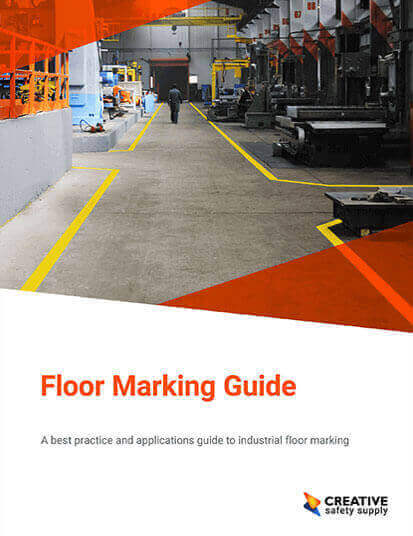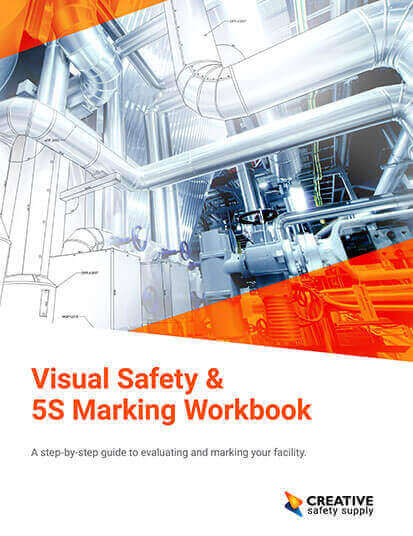
What are Automated Guided Vehicles?
Automated Guided Vehicles, also known as AGVs, are portable robots that are able to carry heavy loads from one place to the next in a warehouse. Since they are not operated by people, AGVs use sensors to recognize various different methods of lane marking and understand where to go. There are a few things that are required for an AGV to be classified as such:
- It must be self-driving. These machines can’t be classified as an AGV if there is a man behind the curtain using a remote control.
- There must be a collision warning fixture in the AGV. By equipping it with sensors to detect potential collisions, this robot is separated from others mainly because it is seen as more “intelligent.”
- It must be able to navigate a pathway to complete its tasks via some sort of sensor that is similar to the collision warning sensors.
- It must be able to know the destination depending on the load its carrying.
Types of AGVs
Aside from custom styles, there are four main types of AGVs that are able to perform different functions. These are:
- Tugger automatic guided vehicles
- Wheel based transport vehicles that can pull multiple non-powered vehicles with loads trailing behind it.
- Forklift automatic guided vehicles
- Used to transport pallets while also having the standard manual forklift attributes. Some even have infrared sensors on the forks that are used for pallet interfacing.
- Unit load automated guided vehicles
- These mainly transport individual items like a coil of steel or an engine to some other machine. They mainly deal with the transport of items that are placed in temporary spots.
- Light load automatic guided vehicles
- These vehicles are 500 pounds or less and usually travel around tight spaces with loads containing small parts, baskets, etc.
All of these types of AGVs are able to be guided by camera technology involving lasers as well as wire, tape, and even paint for lane guidance.
How AGVs Work
There are two methods of guidance that AGVs use to operate in an industrial warehouse setting. These are either a physical guided path on the floor (wires, paint, tape) or a free-range path where there is no physical guidance placed on the floor. With either a change in software or pulling up industrial tape to reset pathways, these machines make the production process more efficient in any facility. Within these two methods, there are several different strategies for pathway recognition. These are:Wire systems:
Slots in the ground are cut about an inch deep where wires are then placed. These wires transmit a radio signal that the sensor in the AGV recognizes, giving it information on its relative position to determine its pathway.
Guide tape:
There are two different kinds of tape used for AGVs: magnetic or colored tape. Unlike AGVs that use wires, tape is easily removed in case the robot’s path needs to change.
Laser target navigation:
This type of recognition requires the AGV to have a laser transmitter and receiver on a rotating turret. This laser sensor finds reflective tape placed on anything stationary like walls, poles, and other machines. The laser system enables the AGV to determine the distance and the angle that it is in relation to its surroundings. Not only that, but its current position is constantly being updated while in motion to then determine its pathway through the warehouse.
Inertial (gyroscopic) navigation:
This AGV has a computer control system that directs and assigns tasks to each robot. Equipped with a gyroscope, these AGVs are able to detect slight changes in its pathway with the help of transponders embedded in the floor of the warehouse. The margin for error with this method is only about an inch.
Natural targeting navigation:
This kind of navigation is defined as one that doesn’t require outfitting your workspace with anything involving floor guides or wall reflectors. Instead, for example, they can use a gyroscope to correct pathways with the help of a laser-range finder. These machines are quick to install, and they can handle failure since there’s not a complex pathway system involved with the natural targeting method. They are also very flexible with on-demand delivery to any location in the warehouse.
Vision guidance:
Vision guidance AGVs are becoming more advanced. Not only do they cost less in the long run (since you don’t have to outfit your facility with robot sensor paraphernalia) but the robots themselves are highly adaptable unlike their wire system AGV cousins. Vision guidance AGVs are equipped with cameras that enable the AGV to create a 3D map of the area. They also use Evidence Grid technology that essentially works out probabilities on occupancy of space to help with the uncertainty of their future surroundings.
Geoguidance:
This system recognizes its environment to establish its location. Like vision guidance, geoguidance is good for warehouses that constantly change to the point where its AGV units need to also be malleable to its surroundings.
Who Uses AGVs and Why Are They Useful?
Large industries involved in pharmaceuticals, chemicals, manufacturing, auto, food and beverage, hospitals, and even theme parks already have caught on to using automated guided vehicles. There are all kinds of reasons to switch to AGVs, the number one thing to look at when weighing the pros and cons of AGV systems is that there is an increase in overall safety. Built in cameras add a level of awareness to the machine that you simply can’t get with man operated machines. Machines don’t get distracted or tired like people do and they are able to work in conditions that we can’t. This directly translates into reduced costs because of the lack of incidents that are more commonplace with human related errors.
Facility labor costs also go down with the use of AGVs since they replace manual machine operators. Some people argue that the application of AGVs takes away jobs; while this is true, it has been refuted by the fact that not a lot of people are wanting to take those dangerous warehouse jobs. Not only that, but the openings are only getting harder and harder to fill.
This leads into the next positive aspect of using AGVs; there is an increase in the level of productivity and activity. By not using manual labor, the facility is able to process select things at all hours of the day and very efficiently since robots are consistently more consistent than people.
Lastly, this is a slow investment, meaning that the facility can add on to their “fleet” of automated guided vehicles rather than buying them all at once. This is handy when there isn’t enough funding up front.
AGV Safety Standards:
The Industrial Truck Standards Development Foundation (ITSDF) created safety standards that apply to self-driving industrial vehicles back in 2005. These standards were adopted by the American National Standards Institute (ANSI) in 2012 and became known as the B56.5 regulations. These standards are continually updated as technology changes in the fast-paced manufacturing world. B56.5 informs the consumer of the safety requirements, design, operation, and maintenance of automated guided vehicles. All of the information in standard B56.5 is pertinent to the safe application of automated vehicles in the workplace and should be given attention prior to outfitting a facility.
Potential Dangers to Having AGVs and The Importance of Lane Labeling
The only danger that people are exposed to when interacting with AGVs is the lack of proper training. AGVs can’t stop sufficiently if an object jumps into their pathway unexpectedly but if that is not directly addressed or the AGV standards are not readily available for workers, then they wouldn’t have any way of knowing this could happen. In the worst-case scenario, a collision with other machines or people often ends in property damage or severe injury, even death.
Every AGV is properly equipped with safety features focusing on collision evasion and warnings. This includes response times in conjunction with its braking abilities when something enters their pathway unexpectedly and from a certain distance. If maintenance is kept in order, then these machines shouldn’t have any major issues.
Of course, there are things to implement that help keep those accidents from happening. Floor tape walkways for pedestrians are a necessity in these facilities as well as floor signs to alert people of these large robots. As the leaders in visual safety, Creative Safety Supply excels in providing custom floor signs and wall signs to our customers who require an eye catching sign that promotes awareness of certain dangers like potential collisions with AGVs.
Similar Articles
- Types of Floor Marking
- Floor Marking for Forklift Traffic
- OSHA Floor Marking
- Floor Marking Ideas for Warehouses
- Floor Marking for Facility Safety
- Aisle Marking Tape – 5 Strongest Tapes You have Ever Seen!
- 15 Forklift Safety Tips [Industry Expert Advice for Safe Operation]
- Floor marking comprehensive research, education and training
- Floor Marking for Electrical Panel Compliance


